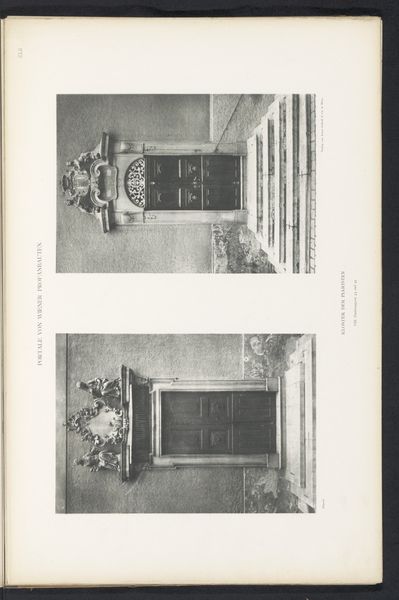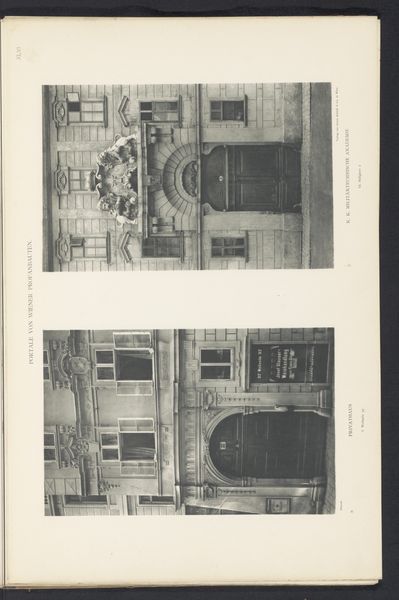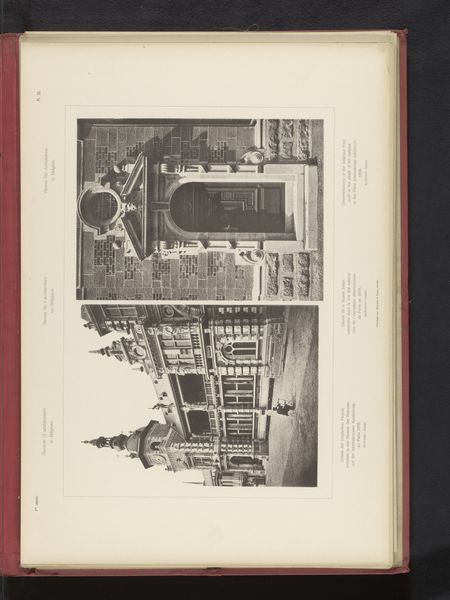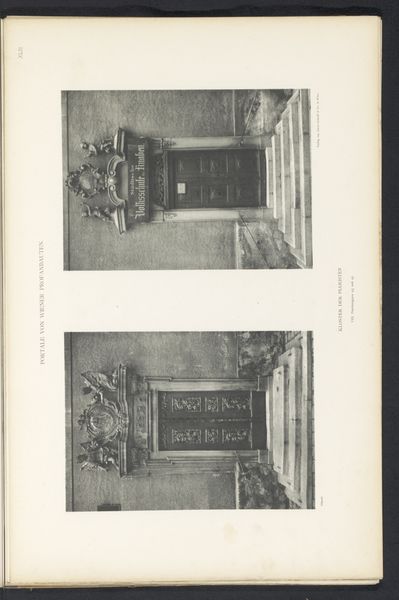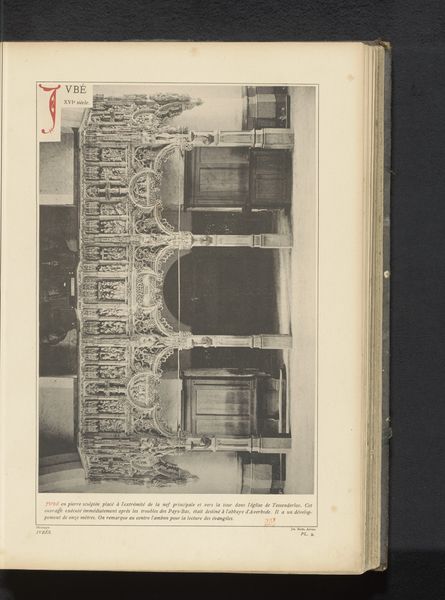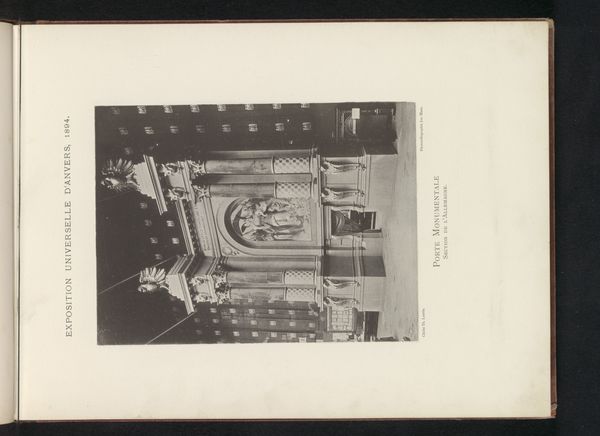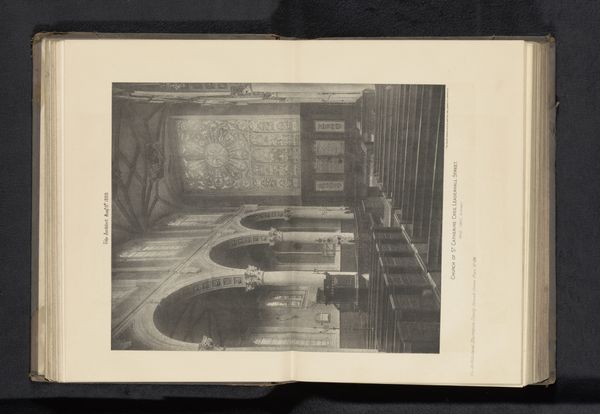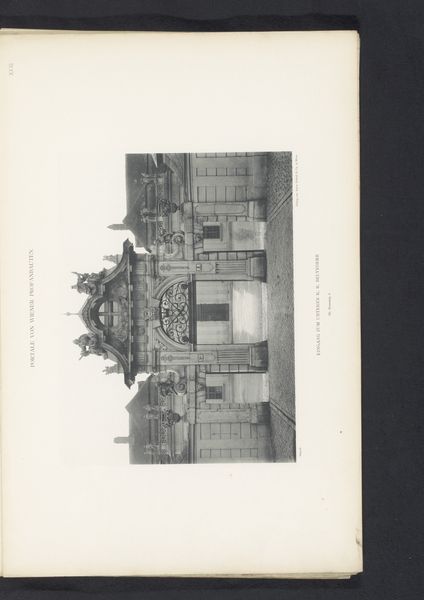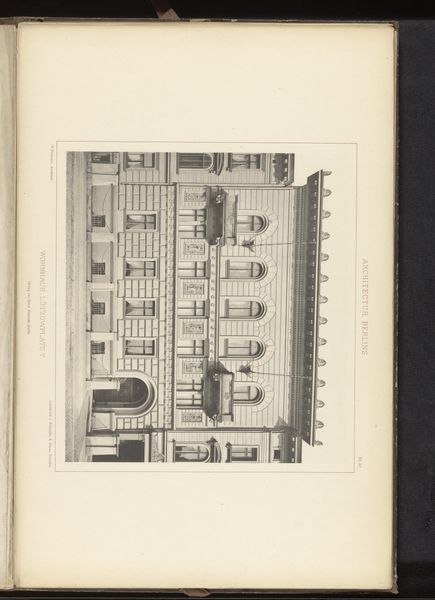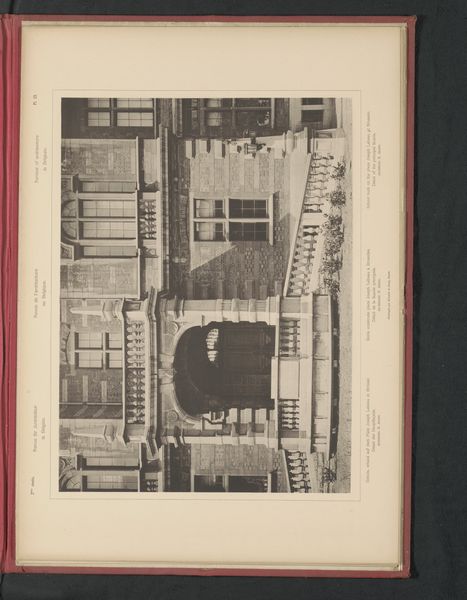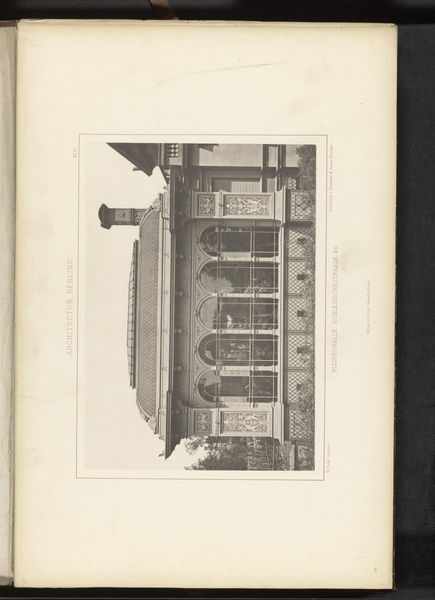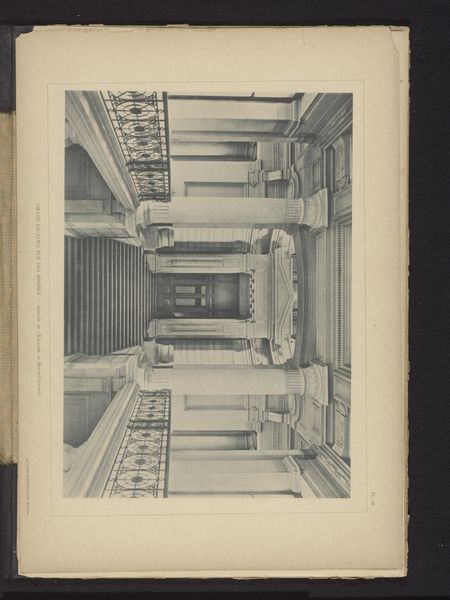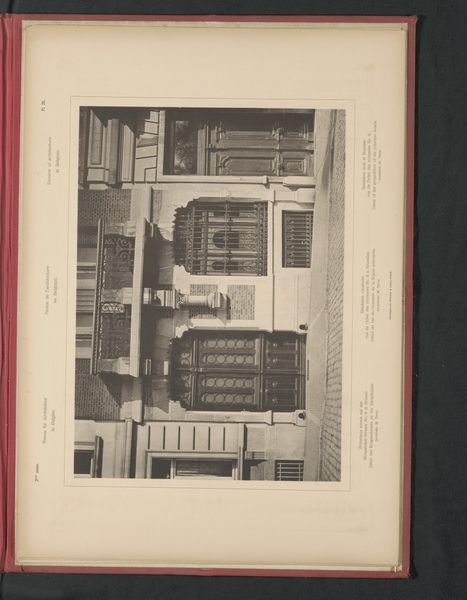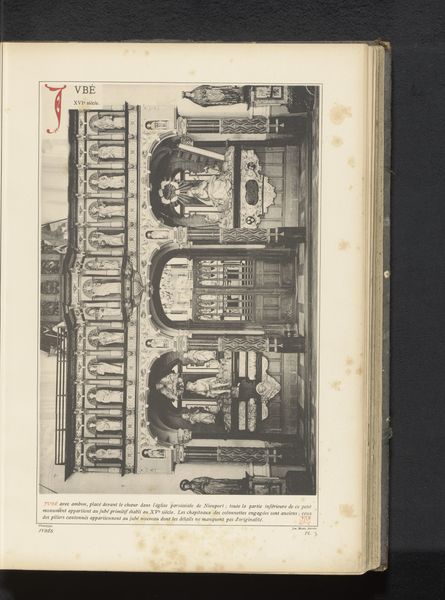
print, photography, architecture
# print
#
photography
#
cityscape
#
architecture
#
building
Dimensions: height 480 mm, width 318 mm
Copyright: Rijks Museum: Open Domain
Editor: Here we have a photographic print entitled "Twee toegangsportalen van panden te Wenen," or "Two Entrance Portals of Buildings in Vienna," created before 1894 by an anonymous artist. The print showcases two ornate building facades, filled with elaborate architectural details. The whole piece has this very serious and austere atmosphere, doesn't it? What kind of stories do you think these buildings hold? Curator: What strikes me immediately is the way this image participates in the broader urban project of Vienna at the time. This photograph, appearing in a publication, speaks to a desire to catalog and present Vienna as a modern, Imperial city, showcasing its architectural prowess. The focus on portals, literally points of access, also points to how urban space was controlled and defined during this period. Who had access, who didn't? How did architectural design reinforce these social structures? Editor: So, the choice of these very grand entrances wasn’t accidental? Were these buildings particularly significant? Curator: The architectural style reflects the aspirations of the Austro-Hungarian Empire. The buildings themselves were likely significant, perhaps governmental or residential buildings for the wealthy elite. Notice how the image emphasizes permanence and power through the solid, classical designs, speaking volumes about the socio-political values being projected. What impact do you think showing these had in solidifying these social constructs for those viewing this at the time? Editor: I suppose it made it all feel official, more real, to see it printed and displayed like this. Almost like advertising the grandeur of Vienna. I hadn’t considered the access and power dynamics, either. Curator: Exactly! It highlights how photographic images, seemingly objective, can actively participate in shaping perceptions of urban space and social order. Editor: I see this piece in a completely different light now! It’s fascinating how a photograph of architecture can reveal so much about a society's values and power structures. Thanks for illuminating this work. Curator: Indeed! Looking at art through the lens of social history makes you realize that nothing exists in a vacuum, especially not a photograph like this.
Comments
No comments
Be the first to comment and join the conversation on the ultimate creative platform.
